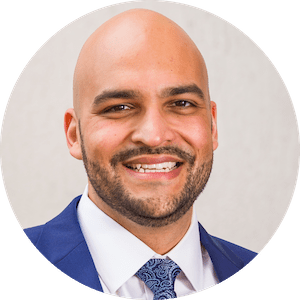
If you want to reach your financial goals faster then your cash flow is the best place to start. Your cash flow reflects the difference between the money that you earned and the money that you spent.
This is the easiest part of your finances to manage and doing so will help you to feel more confident and secure. This article details how Pocket Plan helps you manage your cash flow with a done for you budget that is tagged automatically.
Why Cash Flow Matters
Your cash flow statement is a reflection of the money that comes in and is spent over a defined period of time (weekly, bi-weekly, monthly, quarterly or annually). The easiest way to look at your cash flow is on a monthly basis. That’s because most of our bills are due monthly and looking at our cash flow over a 30 day period should give us a clear signal of the total money in or out.
If you are paid on a monthly or quarterly basis then you’ll want to look at your cash flow over this period to get a better understanding of your personal situation.
Your cash flow should include your income and expenses from all of your accounts. This means that you’ll need to include checking accounts where you receive deposits along with any credit cards that are used to pay for expenses. By including all of your accounts you’ll get a big picture view of all of your financial activities and a better understanding of your financial wellbeing.
If you’re only measuring your cash flow in your checking account, you could be undercounting expenses that are paid with a credit card. Even if you pay the credit card through the checking account, it’ll only be counted as a single expense instead of providing itemized details for a more granular focus.
Why is Cash Flow Important?
The financial system is a debt based system that incentivizes you to take on greater amounts of debt in order to finance your lifestyle. Consumers are told to focus on the monthly payment as a measure of affordability instead of the interest rate.
This means that you are risking paying interest that could otherwise be used to accumulate assets. That’s why the average US Citizen pays $280,000 over their lifetime on interest expenses. By managing your cash flow you will have better insight into where your money is going and how you can build financial wealth.
How to Forecast Your Cash Flow
After you have reviewed your cash flow once it is easier to see your recurring expenses. Items like your subscriptions, debt payments, and monthly obligations are typically easy to forecast. For instance if you have an auto loan that you are paying back over 5 years then you can anticipate paying that monthly amount for the term of the loan. Once you total all of your recurring obligations like your debt and fixed expenses (daycare, subscriptions, etc) then you have a baseline understanding of the minimum amount of money that you’ll need to cover your expenses.
In order to forecast your cash flow you’ll want to define a period that you’d like the forecast to cover (weekly, bi-weekly, monthly, quarterly or annually). If you’re just starting then a monthly forecast is the easiest place to start. However, you may have expenses like property taxes or insurance that you pay annually. By only focusing on a monthly period, you might overlook these types of expenses or have questions when you see significant changes in the months when these expenses come out.
Once you’ve chosen your cash flow period, map out the terms of any debt obligations that you have. This is easier for term loans like student loans or auto loans where the term is defined as a set period of time, like 5 years. However, your credit card terms may be more difficult to define and are often dependent on the minimum payment.
Once you’ve defined your payback periods for any debt then you’ll have a clear understanding of your future cash flow.
Next, include any large expenses that you may be planning for. These could include large purchases, upgrades or one off expenses (like a vacation). Add these expenses to your cash flow forecast to get a more realistic view of your cash flow.
Finally, it’s a good idea to include a target savings value in your cash flow. Even if you aren’t currently saving at this desired rate, you’ll have a safety buffer by including this value in your forecast. This ensures that your cash flow forecast is more resilient as surprise expense come up or life happens.
How Pocket Plan Measures Cash Flow
Pocket Plan measures your cash flow by tagging all transactions as Essential, Non-Essential or savings. By simply connecting your checking or credit card account, you’ll have a personal cash flow statement in minutes.
Essential Expenses
Essential expenses include debt payments, insurance, food, medical and other transactions that are vital to life.
Non-Essential Expenses
Transactions for restaurants, shopping, entertainment, alcohol, convenience stores are some of the items Pocket Plan tags as non-essential. We understand that you may view your expense different than our system so you can change each transaction category as needed.
Savings
Your savings are deposits made to any Savings Accounts, Money Market, CD, Investment or Retirement account.
The total value of each category is summarized in your Cash Flow report. You can view these expenses over different time periods in order to track your expenses and adjust as needed.
How to Improve Your Cash Flow
People can improve their cash flow simply by looking at their expenses. Having an easy way to see where your money is going and the total value of money going to specific areas, like interest, entertainment or shopping, is usually a sober reflection of where you need to focus to improve.
It’s typically only after looking at the total value going to each category that we get motivated to do things like:
- Limit your restaurant costs by preparing a weekly meal plan
- Reduce your alcohol budget by buying in bulk or only drinking on the weekend
- Refinance high interest debt or consolidate balances using a new account
- Pay for entertainment expenses through a business account
Believe it or not, individuals were able to deduct their credit card interest payments until 1983. Today, business interest payments are deductible, but individuals don’t get this same benefit. It’s important to keep your cash flow current and stay updated on financial markets and policy changes.
By minimizing your interest payments and managing your expenses you’ll grow assets and improve your Net Worth.






